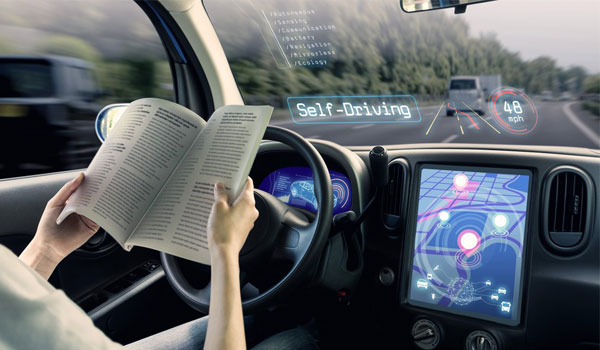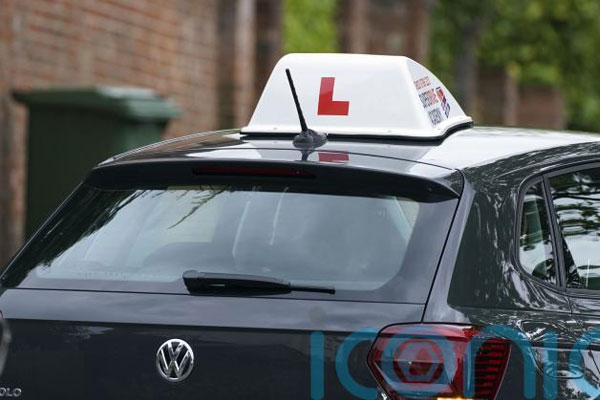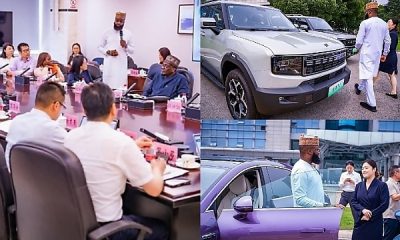Computerized driving teachers may soon be able to take the role of human instructors. No, not full-fledged robots, just self-driving cars. As first reported by Motor1, this is the concept behind the driver-training system stated in a patent filed by General Motors with the United States Patent and Trademark Office (USPTO).
The patent filed by General Motors describes autonomous technology that does not require a live, breathing driving instructor.
Instead, the system is designed to assess and train new drivers by combining sensors for the car’s autonomous functions with monitoring how the driver-in-training operates controls like the accelerator, brake, and steering.
A CPU with a driving algorithm stored in the car’s memory is also used by the system. The processor determines a score by comparing the trainee’s manual inputs with approved driving directions.
According to GM’s autonomous driver-training feature, the score it calculates is similar to a grade given by a human teacher. According to the patent, this score can also be shared with third parties.

Most significantly, it’s utilized to see if the driver fits certain requirements. Based on how their score compares to the predefined thresholds, it then selectively provides the driver more control over certain car operations. That sounds a lot more intuitive than teaching young Kyle or Kelly how to manage busy junctions or merge onto the motorway before they’re ready.
While it’s unclear whether this device will be available on personal automobiles, the patent suggests that it may be utilized as part of a fleet for driver instruction.
It also emphasizes the potential benefits of using autonomy rather than human instructors to teach novice drivers. Not only might real people be biased, but traditional training procedures may be more expensive and ineffective than autonomous techniques, according to the patent.
We also don’t know if GM has any plans to make this technology available to the general public, but it’s reassuring to see that in the future, technology can be used to teach individuals how to drive rather than simply take away their capacity to do so.
Computerized driving teachers may soon be able to take the role of human instructors. No, not full-fledged robots, just self-driving cars. As first reported by Motor1, this is the concept behind the driver-training system stated in a patent filed by General Motors with the United States Patent and Trademark Office (USPTO).

The patent filed by General Motors describes autonomous technology that does not require a live, breathing driving instructor. Instead, the system is designed to assess and train new drivers by combining sensors for the car’s autonomous functions with monitoring how the driver-in-training operates controls like the accelerator, brake, and steering.
A CPU with a driving algorithm stored in the car’s memory is also used by the system. The processor determines a score by comparing the trainee’s manual inputs with approved driving directions.
According to GM’s autonomous driver-training feature, the score it calculates is similar to a grade given by a human teacher. According to the patent, this score can also be shared with third parties. Most significantly, it’s utilized to see if the driver fits certain requirements.
Based on how their score compares to the predefined thresholds, it then selectively provides the driver more control over certain car operations. That sounds a lot more intuitive than teaching young Kyle or Kelly how to manage busy junctions or merge onto the motorway before they’re ready.
While it’s unclear whether this device will be available on personal automobiles, the patent suggests that it may be utilized as part of a fleet for driver instruction. It also emphasizes the potential benefits of using autonomy rather than human instructors to teach novice drivers.
Not only might real people be biased, but traditional training procedures may be more expensive and ineffective than autonomous techniques, according to the patent.
We also don’t know if GM has any plans to make this technology available to the general public, but it’s reassuring to see that in the future, technology can be used to teach individuals how to drive rather than simply take away their capacity to do so.

 News5 days ago
News5 days ago
 News1 week ago
News1 week ago
 News1 week ago
News1 week ago
 News6 days ago
News6 days ago
 News6 days ago
News6 days ago
 News5 days ago
News5 days ago
 Car Facts4 days ago
Car Facts4 days ago
 News1 week ago
News1 week ago

